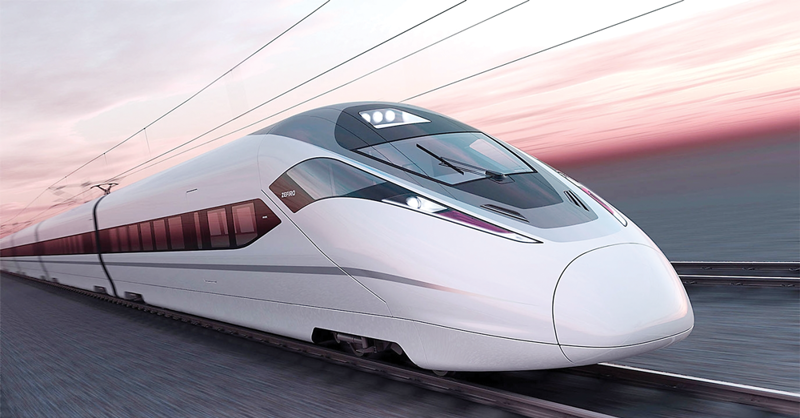In its latest feasibility report of the North-South high-speed railway, the Ministry of Transport (MoT) proposed the construction of a 1,541 km long, double-track high-speed railway line, with a designed speed of 350 km/h.
The new railway line has a gauge of 1,435mm and will be totally electrified. In its report, the MoT projects that the cost for this new high-speed railway system will be estimated at $67.34 billion.
The projected North-South high-speed railway will feature 23 passenger stations, averagely spaced 67 km apart, along with five cargo stations linked to major logistics hubs. The line will start from Ngoc Hoi Station in Hanoi, traverse 20 provinces and cities, and conclude at Thu Thiem Station in Ho Chi Minh City.
The MoT has proposed using rail technology that allows for multiple types of trains, ensuring an open system that can accommodate various providers and prevent monopolies.
According to studies, rail technology is one of three primary technologies used in high-speed rail construction worldwide besides magnetic levitation and hyperloop. It supports speeds of 250-350 km/h, has moderate investment costs, and is widely adopted by many countries.
Regarding speed selection, the Ministry emphasized that the 250 km/h designed speed, while considered high-speed, is outdated by about 50 years and does not align with modern global trends.
This speed would be inefficient over the 800 km-plus North-South corridor, which has densely populated urban areas. Additionally, upgrading to a 350 km/h designed speed later would render much of the infrastructure unusable, resulting in wastage.
Calculations show that on the Hanoi - Ho Chi Minh City route, a 350 km/h speed could attract around 12.5% more passengers than the 250 km/h option. However, investment costs for the 350 km/h option are only about 8-9% higher.
The investment policy for the projected North-South high-speed railway was agreed upon by the 13th Party Central Committee during its plenary session between September 18-20,
The MoT aims to have the investment plan approved by the National Assembly in October of this year. In the 2025-2026 period, international consultants will be selected through tender, with preliminary feasibility studies conducted.
By late 2027, land clearance, contractor selection, and construction on the Hanoi-Vinh and Nha Trang-Ho Chi Minh City sections will commence. The Vinh-Nha Trang section is slated for construction between 2028 and 2029, with the entire line expected to be completed by 2035.
This high-speed railway is designed to meet transportation needs, redistribute traffic along the North-South corridor, and serve as a catalyst for socioeconomic development, national defense and security. It will help realize the strategic goals set forth by the 13th National Party Congress and integrate with the nation’s broader transportation infrastructure plans.
The project is expected to enhance regional connectivity, spur economic growth, restructure urban centers, and influence population distribution and economic transition. Moreover, it will support the country's logistics network, boosting competitiveness and reducing costs.
Beyond transportation, the railway will stimulate the development of Vietnam's railway industry and supporting sectors. It will promote sustainable, modern, and eco-friendly transportation, reduce traffic accidents, and curb environmental pollution, all while strengthening national defense and security.









 Google translate
Google translate